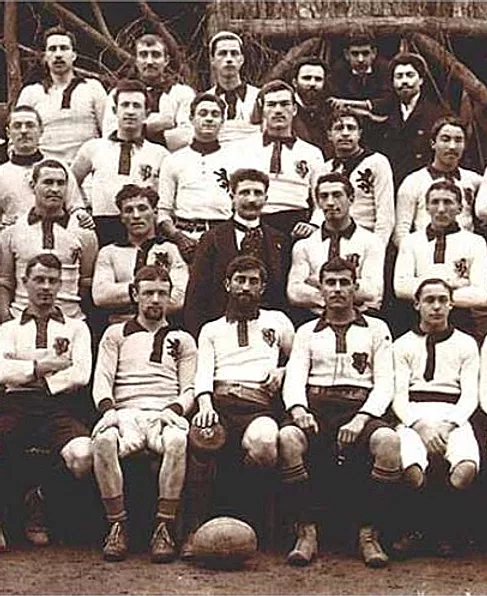Try it.
INTRODUCTION
TO RUGBY
RUGBY IS FOR EVERYONE
Rugby in a nutshell
Whether it’s the World Cup or a local club game: playing rugby satisfies the soul like nothing else. Rugby is a game of passion that’s full of action, excitement, and beauty, as well as unpredictable moments and dramatic resolutions on the field. It can be intimidating for a first-time viewer though.
For all newbies: this is Rugby in a nutshell, explaining key terms, positions, scoring, and the laws (yes, the rugby rules are called “laws”).
of 15-a-side rugby, the most common form of the sport.
- Number of players per team: 15 (plus 7 substitutes)
- Duration: 2 x 40-minute halves with a mandatory half-time break of 10 minutes
- Field: 100 m (length) x 70 m wide with H-shaped goalposts on each goal line. The distance between the goal posts is 5.6 metres with a min. crossbar height of 3.4 metres.
- Ball: 1 oval-shaped high tech synthetic waterproof all-weather ball (size 5)
- Player kit: Jerseys, socks, shorts, boots and for safety reasons, a mouth guard is essential along with headgear if required by a player.
- Referees: A match is played with one referee and two touch judges or assistant referees
Each team of 15 players is divided into eight forwards and seven backs, each with defined roles in the team. Essentially, the powerful, hulking forwards are ball-winners who also play a major part in retaining possession when a player on their side is tackled. They take part in rugby's set pieces – the scrum and the lineout – and secure possession; The fast, elusive backs receive the ball from the forwards – their task is to run and pass to create space.
The objective of the game is to score more points than the opposition. Points are accumulated through scoring a try (five points), a penalty (three points), a drop goal (three points) or a conversion kicks following a try (two points). The attacking team strives to move forward by kicking, passing or running with the ball in hand, but when the ball is being passed, it may not travel forward. If it does then a scrum is awarded to the opposition. Much of the sport's appeal lies in the players' speedy interplay and total commitment.
When a team is defending, they will try to stop the opposition advancing toward their try line by hauling to the ground players who are carrying the ball. If successfully tackled, the player carrying the ball must release it once he or she is on the ground.
Beyond the basics
START TALKING RUGBY
The pace and power of modern Rugby have made it one of the most exciting spectator sports around. Indeed, several aspects of the Game have evolved as a result of this mass audience appeal.
It’s simple... but complex!
To get you on the right track early, here are the most important parts of rugby to familiarize yourself with before watching a match or joining your first training.

SCRUM

LINEOUT

RUCK
MAUL

TRY

TACKLE
KICK
Variations of Rugby
FAQ's









